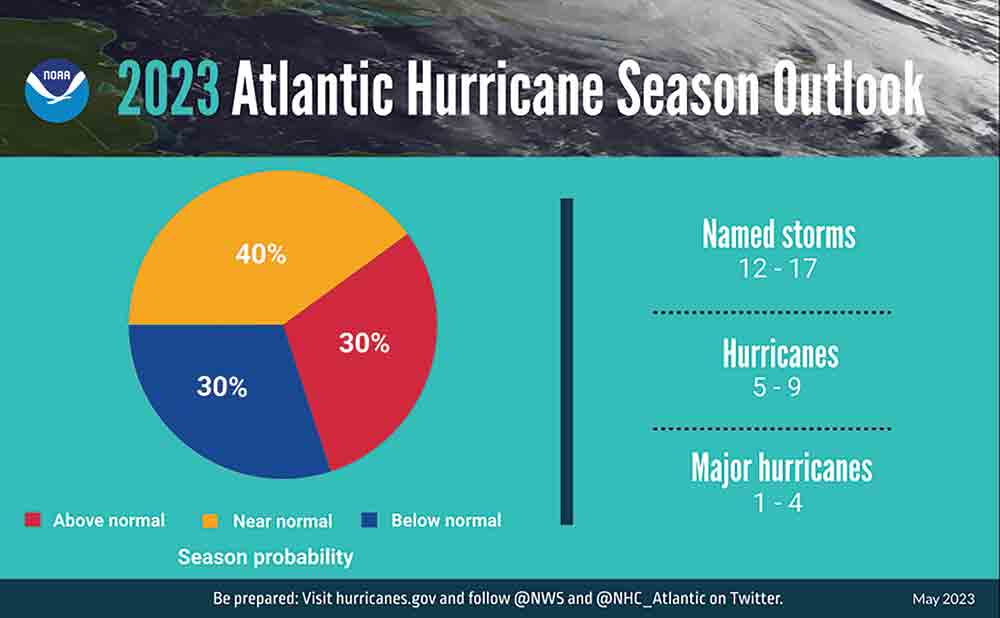‘Near-normal’ hurricane season predicted
 By Chris Edwards
By Chris Edwards
This email address is being protected from spambots. You need JavaScript enabled to view it.
Hurricane season is officially among us as of today, and according to the National Oceanic and Atmospheric Administration, Texas, as well as the rest of the Gulf and East coasts will likely experience a “near-normal” hurricane season.
There are between 12 to 17 named storms predicted to form this season, according to forecasting, with one to four of them possible Category 3 hurricanes. The Atlantic hurricane season lasts from June 1 through Nov. 30.
According to the NOAA, an average Atlantic hurricane season is one with 14 named storms, with three of them “stronger hurricanes.”
The state’s Health and Human Services Commission, in a news release last Thursday, reminded all healthcare facilities, including long-term care facilities, and childcare operations to make sure their emergency preparedness plans are updated and in place for the hurricane season.
Stephen Pahl, the deputy executive commissioner with HHSC, said “Texas weather can be very unpredictable.”
On Tuesday, Texas Land Commissioner Dawn Buckingham held a press conference and reminded Texans to prepare; to take measure to protect families and homes.
“Because of the GLO’s disaster recovery programs, Texas is better prepared for natural disasters like hurricanes, floods and wildfires,” Buckingham said.
In another news release from the Texas Electricity Ratings blog, despite predictions citing “near average activity” or “slightly below average activity,” predictions are subject to uncertainties. NOAA Administrator Rick Spinrad said during a news conference last week that “it only takes one storm to devastate a community.” Spinrad’s warning is something that Texans, unfortunately, know all too well, throughout the past two decades, with catastrophic hurricanes Rita; Ike and Harvey.
The site notes how the El Nino Southern Oscillation (ENSO) “plays a huge role in how tropical storms form by affecting the temperature of large areas of the mid-Pacific Ocean at the equator.”
There are three phases of ENSO: La Nina; El Nino and ENSO Neutral. According to the NOAA, conditions that both suppress and encourage hurricane development are at play. NOAA expects an El Nino pattern to develop, which has been absent in recent years. El Nino weather has historically dampened hurricane activity in the Atlantic. Last year saw La Nina conditions, in which colder than normal water moves into the mid-Pacific Ocean, thus bringing cold winter weather to the northern United States, but mild, drier weather to Texas.
According to NOAA, other factors in the Atlantic Ocean such as warmer-than-normal sea surface temperatures can fuel storm development.
The normal peak times for tropical storms are in August and September, which means, if El Nino emerges by August, it could reduce the possibility of any storms hitting the Gulf of Mexico at that time.
You are a guest
or post as a guest
Be the first to comment.

